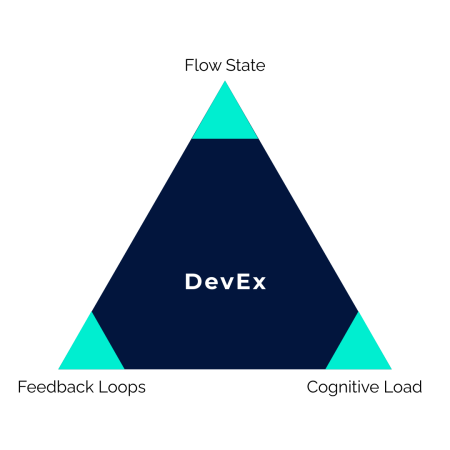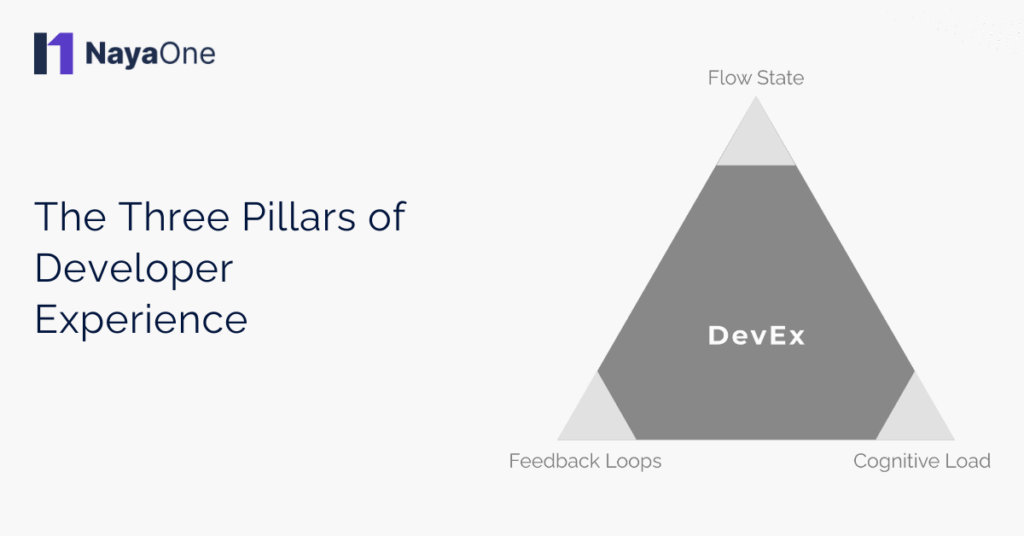Developer Experience (DevEx) shapes how coders in banks create, test, and deliver - how fast they get feedback, how easily they focus, and how smoothly they navigate complexity. Poor DevEx creates roadblocks: sluggish delivery, frustrated teams, and talent slipping away.
Great DevEx clears the way, letting developers shine at solving problems and building secure, innovative financial solutions that spark growth. Drawing from research on over 40,000 developers, this blog dives into the three pillars of DevEx - Feedback Loops, Flow State, and Cognitive Load - and shows how they drive banking innovation in 2025.

Flow State: Coding in the Zone
There’s magic in “the zone” - those uninterrupted hours where developers solve tough problems and create their best work.
A supportive environment - clear goals, fewer interruptions - unlocks this magic. One bank grouped meetings to create 2 – 4 hour focus blocks, increasing uninterrupted coding time by 25%, much like Pfizer’s streamlined workflows.
Tools like Multitudes’ calendar integration reveal meeting loads, helping teams protect “maker time.
Practical tip: Try a “Google-first” culture - encourage devs to search before pinging teammates - and assign one rotating support person per sprint to handle ad-hoc tasks. This keeps most devs focused, speeding up features like AI-driven lending apps while boosting satisfaction
Feedback Loops: Quick Wins, No Waiting
Every coding session hinges on feedback: write code, test it, fix it, repeat. Slow feedback - like waiting hours for a compliance scan or days for a code review - saps momentum.
In banking, where a data breach averages $5.9 million, catching issues before User Acceptance Testing (UAT) is critical.
Tools like Snyk or GitHub’s real-time error highlighting in IDEs spot vulnerabilities instantly, cutting remediation costs by 50%.
For example, a bank building a fraud detection app can integrate automated unit tests that run in seconds, not minutes, keeping devs in the loop.
One team slashed code review turnaround from days to hours by using GitHub’s pull request nudges, boosting delivery speed by 30%.
Practical tip: Set up CI/CD pipelines with instant test feedback and track review times with tools like Multitudes to spot bottlenecks. Fast loops mean devs iterate confidently, delivering compliant apps that thrill customers and execs.
Cognitive Load: Clear Paths, More Creativity
Coding is complex, but bad documentation or convoluted compliance processes make it harder, driving errors and burnout. With 58% of senior developers ready to quit over tool frustration, reducing cognitive load is a retention game-changer.
Clear, centralised API docs and intuitive tools like Jira for streamlined requirements cut mental overhead. A European bank adopted a unified developer portal, reducing onboarding time by 15% and errors by 20%.
Multitudes’ insights can pinpoint where devs spend time (e.g., bug fixing vs. feature work), highlighting process clutter.
Practical tip: Simplify architectures with modular codebases and automate repetitive compliance checks to free mental space. This lets devs focus on innovations like embedded finance, not untangling red tape.
Measuring DevEx: Listen and Track
You can’t improve what you don’t measure. Pairing developer surveys with system metrics uncovers what’s holding teams back.
Track build times, deployment frequency, and satisfaction with tool ease. The Developer Experience Index (DXI) ties it to impact: a one-point gain saves 13 minutes weekly per developer - 10 hours a year.
Surveys on feedback speed or focus time ensure insights lead to action, keeping teams aligned
Get Started: Action Plan
- Test Smart Tools: Pilot real-time security scanners to speed feedback loops.
- Protect Focus: Limit interruptions, aiming for 25% more coding time.
- Simplify Work: Centralise APIs and docs to cut errors by 20%.
- Measure Impact: Use quarterly surveys and DXI to track gains.
Poor DevEx holds banks back; great DevEx unleashes innovation. In 2025, it’s the key to building faster, smarter, and stronger.
Talk to us about how NayaOne reduces friction for developers while meeting regulatory requirements.





